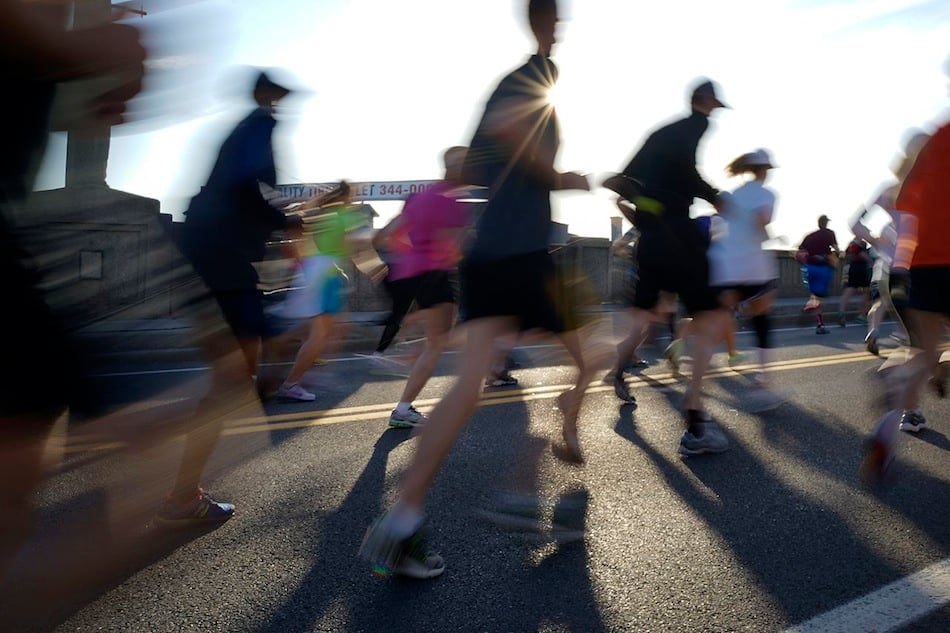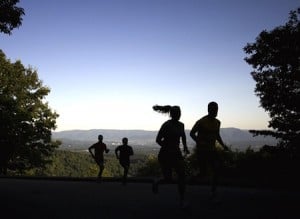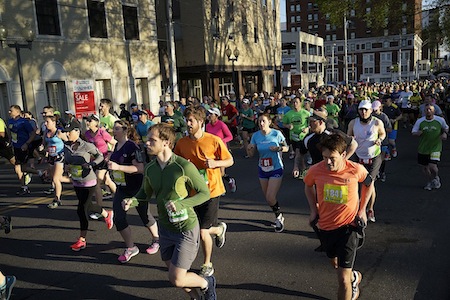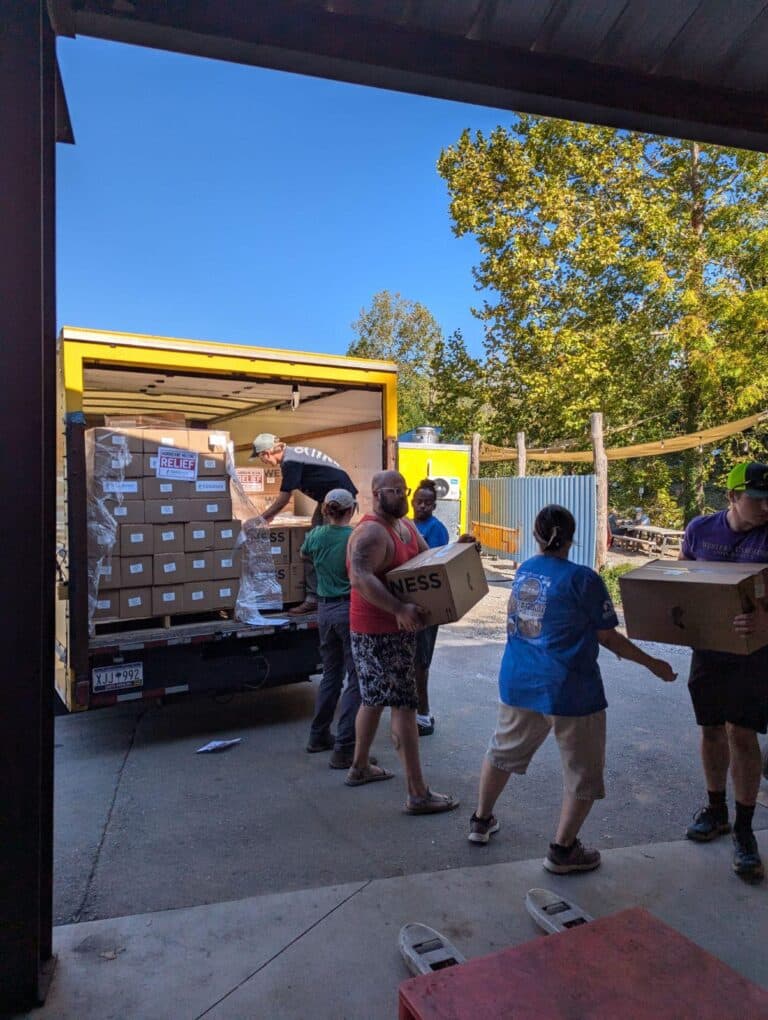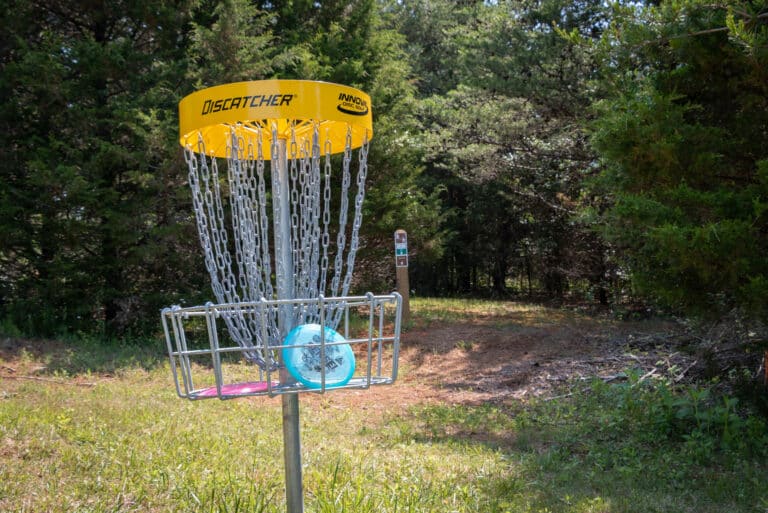Running America’s Toughest Road Race
“Complete. Don’t compete.” That was the advice I was given by Pete Eshelman, race director for the Blue Ridge Marathon.
The race was 10 days away and I was preparing to travel to Roanoke, Va., from my home in Phoenix, Ariz. Eshelman was answering questions and going over details via a live chat with me and several other runners.
Dubbed “America’s Toughest Road Race,” the Blue Ridge Marathon starts in downtown Roanoke and winds up and over three neighboring peaks for a total elevation change of 7,430 feet.
The half boasts more than 3,700 feet of knee-pounding elevation change over 13.1 miles. There’s also a 10K and an unofficial double marathon that starts five hours before the marathon.
This is what many call a bucket-list race — attractive because of its sheer difficulty, its obscurity (the marathon caps at 600 runners), and the beauty of a lush, winding course that traces part of the Blue Ridge Parkway, offering sweeping views of the valley below.
Looking at the course map and elevation profile, I can’t help but wonder: What is it about misery that loves company?
This race is touted as “brutal,” which is precisely why folks like me are traveling from around the country to run it. Meanwhile, millions of weekend warriors are lining up for local mud races, military-inspired obstacle courses, and harrowing nighttime trail runs. It’s a trend I find perplexing – the more punishing the race, the more eager we are to sign up.
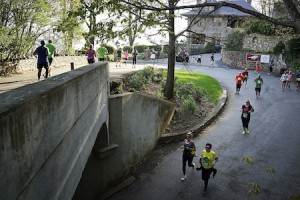
“Complete, don’t compete” is easy advice to follow. I’ve run a dozen half marathons, always finishing squarely middle-of-the-pack. Sure, I train and strive to improve, but my number one goal for every race is to have fun, to feel strong, and to get to know a new place by running it.
Past Blue Ridge Marathon participants have said you should expect to add a minute per mile to your typical pace. So, on race day I seed myself in the 10:30-mile corral. Almost immediately after the starting horn, we begin climbing, up city streets, over a bridge, and directly toward the mountain.
I jog at a steady pace, feeling strong, enjoying the energy of the crowd and the view… until the road reaches a 10 percent grade and I begin to wonder how long I can sustain this.
To distract myself, I focus on the scenery. Dogwoods are blossoming and the forest is vibrant green. Wisteria vines hang like garland from the dense undergrowth. It’s a welcomed contrast to the brown desert landscape I live in.
Just as I think I can’t take another switchback, we reach the Mill Mountain Star, the high point of the half marathon course and the start of a long, beautiful two mile descent. The middle third of the course is fairly gentle as it skirts the Roanoke River, and I’m actually able to carry on conversations with other runners. I take it easy, with self-preservation in mind.
The second major climb, Peakwood Drive, starts around mile 8 and is steeper, though shorter than Mill Mountain. It meanders through the historic neighborhoods of South Roanoke. The race offers plenty of official aid stations with both food and water, yet the locals take it to a new level, camping out in their yards, blasting music and offering runners beer, mimosas, and champagne. Southern hospitality at its finest.
When I see runners toasting with plastic champagne flutes at the crest of Peakwood, I’m reminded of the other advice Eshelman gave: “Take your time and enjoy the company, the views, and the people you meet along the course… Oh, and seriously consider walking the downhills.”
I see what he means. My knees endure the descent with a twinge of pain. Mostly, I enjoy the effortless stride compared to the plodding uphill sections. It’s a perfect antidote to the climbs, both physically and emotionally.
I cross the finish line tired and relieved, but not depleted. It’s a rewarding sort of exhaustion. My time is about 25 minutes slower than my usual half marathon pace, but I finish in the top third for my age group, better than my usual ranking.
Is the Blue Ridge Marathon really America’s toughest race? I’m not sure. It’s definitely the most challenging half I’ve ever run. But in anticipation of its brutality, I trained hard, ran conservatively, and I recovered quickly.
One thing I can say for sure: It’s the most beautiful, most supportive, and friendliest race I’ve ever run. Add it to your bucket list.
What got me through
Aside from months of training and relentless hill repeats, that is.
1. The right shoes: They had to be light, but provide enough cushioning for 13.1 miles of hills, and roomy in the toebox so that my toes didn’t slam against the front on the steep descents. For those reasons and more, I loved my Saucony Mirage 3s ($110; saucony.com). They’re perfect for those of us who want stable, low-profile shoes that don’t weigh you down.
2. Layering tops: With more than 3,700 feet of elevation change and a predicted temperature range of 45 to 70 degrees F and 70 percent humidity, I needed a layering system that was simple and versatile. I chose two Lululemon running tops – the Cool Racerback and Run Swiftly Long Sleeve — because they’re lightweight, seamless, and they layer together perfectly. I was able to stay warm on the cool sections and cool on the steamy climbs. Bonus: Silverescent fibers in the fabric meant I didn’t stink up the beer tent at the finish line. ($42-$68; lululemon.com)
3. Handheld hydration: Carrying a small hydration bottle let me skip the first couple of aid stations and get into a groove on the ascent. I love my NATHAN QuickShot Plus ($20; nathansports.com) because its zippered pouch also stows an energy gel, and it feels like you’re carrying nothing.
4. Recovery drink: Since I knew I had a long flight home the next day, quick recovery was a top priority. I went with TwinLab Clean Series Sport Protein ($44 for 20-serving container; cleanseries.twinlab.com), which is packed with protein, amino acids and free of artificial sweeteners, preservatives and GMOs.
–Gina DeMillo Wagner is an award-winning journalist specializing in fitness, travel, and parenting. She blogs at thedailyb.net
